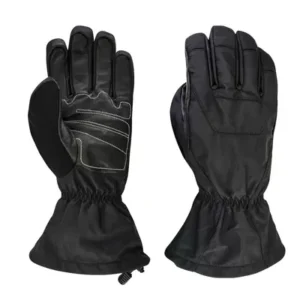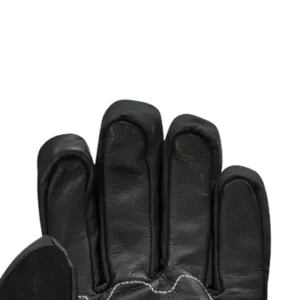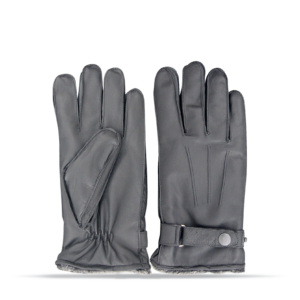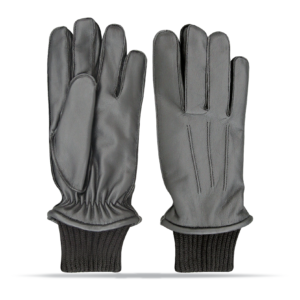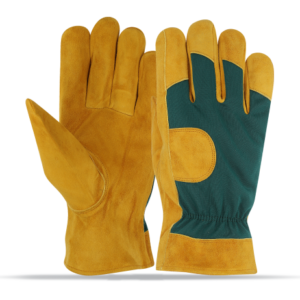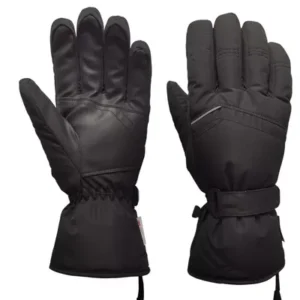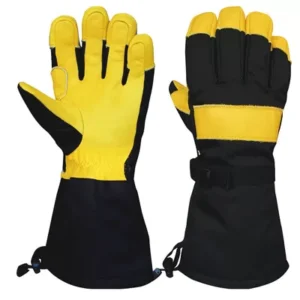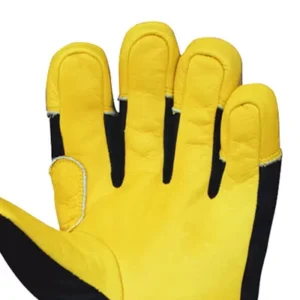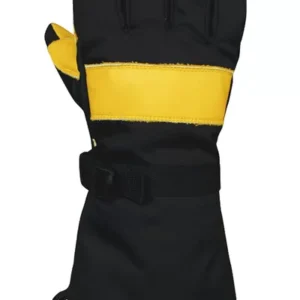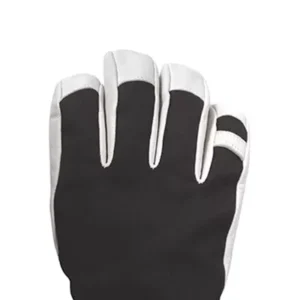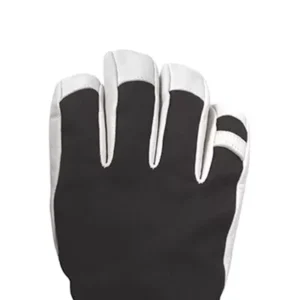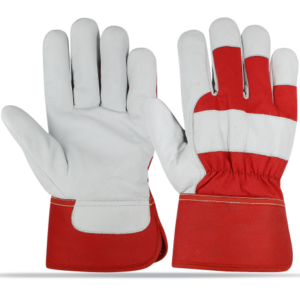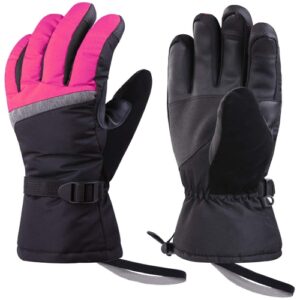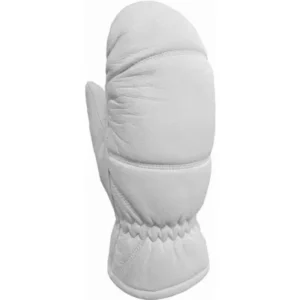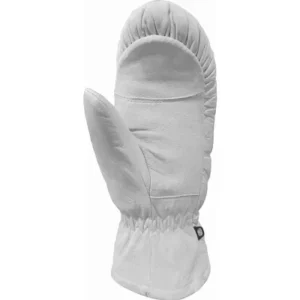Ski Gloves
-
-
Read more
- Add to WishlistAdd to Wishlist
- Ski Gloves
Cold Weather Two In One Ski Work Gloves / Waterproof Snowboard Gloves115
- Design: Two-in-one design with insulated inner layer and waterproof outer shell Material: Durable, abrasion-resistant fabric for long-lasting performance Waterproofing: Outer shell made with waterproof material to keep hands dry in snow and rain Insulation: High-quality thermal insulation for warmth in extreme cold temperatures Lining: Breathable lining to wick moisture away from the skin Grip: Textured palm and fingers for enhanced…
Add to WishlistAlready In WishlistAdd to Wishlist -
Read more
-
-
Read more
- Add to WishlistAdd to Wishlist
- Ski Gloves
Dressing Gloves 204 – Stylish and Protective Gloves for Medical and Hygiene Use
- Material: High-quality synthetic or latex Size Options: Small, Medium, Large, Extra Large Color: White or blue Texture: Smooth for enhanced precision and handling Fit: Snug and comfortable for extended wear Application: Ideal for medical use, hygiene tasks, and food handling Features: Available in non-sterile or sterile options
Add to WishlistAlready In WishlistAdd to Wishlist -
Read more
-
-
Read more
- Add to WishlistAdd to Wishlist
- Ski Gloves
Dressing Gloves 204 – Versatile and Protective Gloves for Medical and Hygiene Use
- Material: Durable synthetic or latex Size Options: Small, Medium, Large, Extra Large Color: White or blue Texture: Smooth for precision and ease of handling Fit: Snug and comfortable for extended wear Application: Ideal for medical use, hygiene tasks, and food handling Features: Available in non-sterile or sterile options
Add to WishlistAlready In WishlistAdd to Wishlist -
Read more
-
-
Read more
- Add to WishlistAdd to Wishlist
- Ski Gloves
Garden Gloves TB 205 – Durable and Comfortable Gloves for Gardening
- Material: High-strength synthetic blend Grip: Textured palm and fingertips for secure handling Wrist Closure: Adjustable strap for a snug fit Sizes: S, M, L, XL Colors: Green, Blue, Gray, and more Breathability: Moisture-wicking fabric for comfort Resistance: Medium-level puncture and tear resistance
Add to WishlistAlready In WishlistAdd to Wishlist -
Read more
-
-
Read more
- Add to WishlistAdd to Wishlist
- Ski Gloves
Garden Gloves TB 206
- Material: High-quality synthetic fabric Grip: Textured palm and fingertips Wrist Closure: Adjustable strap Sizes: S, M, L, XL Colors: Various options available Breathability: Moisture-wicking, breathable fabric Resistance: Good puncture and tear resistance
Add to WishlistAlready In WishlistAdd to Wishlist -
Read more
-
-
Read more
- Add to WishlistAdd to Wishlist
- Ski Gloves
ISO9001 Leather Ski Gloves For Winter PU 3M Insulation Membrane116
- Material: Premium leather exterior for durability and protection Insulation: 3M insulation for superior warmth in extreme cold conditions Waterproofing: PU membrane for reliable waterproof performance Certification: ISO9001 certified, ensuring high quality and safety standards Grip: Textured palm for enhanced grip on ski poles, snowboards, and other equipment Fit: Ergonomic design for flexibility and natural hand movement Breathability: Breathable design allows…
Add to WishlistAlready In WishlistAdd to Wishlist -
Read more
-
-
Read more
- Add to WishlistAdd to Wishlist
- Ski Gloves
Outdoors Five fingers Leather Ski Gloves Deerskin Ski Gloves Hysafety brand117
- Material: Premium deerskin leather for durability, comfort, and a soft feel Design: Five-finger design for individual finger movement and enhanced dexterity Insulation: Thermal insulation to provide excellent warmth in cold weather Grip: Textured palm surface for a secure grip on ski poles, snowboards, and other outdoor equipment Fit: Ergonomically designed to conform to the natural shape of the hand for…
Add to WishlistAlready In WishlistAdd to Wishlist -
Read more
-
-
Read more
- Add to WishlistAdd to Wishlist
- Ski Gloves
Polyfill Insulation Warm Winter Ski Gloves Windproof Waterproof118
- Material: Durable outer shell with waterproof coating to prevent moisture penetration Insulation: Polyfill insulation for excellent thermal retention and warmth in cold weather Windproof: Outer layer designed to block cold winds and maintain warmth Lining: Breathable lining to wick away moisture, keeping hands dry and comfortable Grip: Textured palm and fingers for enhanced grip on ski poles, snowboards, and other…
Add to WishlistAlready In WishlistAdd to Wishlist -
Read more
-
-
Read more
- Add to WishlistAdd to Wishlist
- Ski Gloves
Rigger Gloves TB-207
- Material: Heavy-duty synthetic fabric and leather Grip: Textured palm and fingers for secure handling Padding: Additional knuckle and palm padding for protection Wrist Closure: Adjustable strap for a secure fit Sizes: Available in various sizes (e.g., M, L, XL) Colors: Typically available in multiple colors (e.g., black, gray) Durability: Designed to withstand tough conditions and heavy use
Add to WishlistAlready In WishlistAdd to Wishlist -
Read more
-
-
Read more
- Add to WishlistAdd to Wishlist
- Ski Gloves
Ski Gloves Art No#: ii-113
- Material: High-quality, abrasion-resistant outer fabric with waterproof membrane Insulation: Premium thermal insulation for superior warmth Waterproofing: Integrated waterproof membrane to keep hands dry Breathability: Breathable lining to wick moisture away and enhance comfort Grip: Textured palm and fingers for secure handling of equipment Cuff Style: Adjustable wrist straps and cuffs to prevent snow and cold air from entering Fit: Ergonomic…
Add to WishlistAlready In WishlistAdd to Wishlist -
Read more
-
-
Read more
- Add to WishlistAdd to Wishlist
- Ski Gloves
White Goat Leather Shell Ski Gloves For Men For Women Skateboarding Mittens Style114
- Material: Premium white goat leather for durability and a soft touch Insulation: Thermal insulation for excellent warmth retention Style: Mittens design to maximize warmth by keeping fingers together Grip: Textured palm surface for enhanced grip on equipment Fit: Unisex design suitable for both men and women Size Options: Available in various sizes for a comfortable, customized fit Cuff Style: Elasticized…
Add to WishlistAlready In WishlistAdd to Wishlist -
Read more
Ski Gloves: Unveiling the Pinnacle of Winter Comfort
When winter descends with its frosty breath, avid skiers and snow enthusiasts gear up to embrace the snow-covered slopes. One crucial piece of equipment that often goes overlooked is the trusty ski gloves. In this comprehensive guide, we delve into the intricacies of ski gloves, exploring the key features that set them apart and contribute to a seamless winter sports experience.
1. Choosing the Right Material for Maximum Performance
Selecting the appropriate material for your ski gloves can make a world of difference. Synthetic Marvels: The Rise of Insulating Technologies highlights the evolution of synthetic materials, such as Thinsulate and PrimaLoft, that offer superior insulation without compromising on flexibility.
Synthetic Marvels: The Rise of Insulating Technologies
Advancements in insulating technologies have revolutionized the world of ski gloves, offering a pantheon of synthetic marvels that cater to the diverse needs of winter enthusiasts. Thinsulate, a microfiber insulation developed by 3M, stands out for its ability to provide warmth without bulk, ensuring that your hands remain nimble and responsive. Similarly, PrimaLoft, a synthetic alternative to down, excels in retaining heat even when wet, a crucial factor in unpredictable mountain weather.
Beyond these, innovative blends of materials have emerged, combining the best attributes of various synthetics to create a hybrid insulation powerhouse. Manufacturers now meticulously engineer these materials, considering factors such as weight, breathability, and compressibility, resulting in ski gloves that not only keep you warm but also enhance overall performance on the slopes.
2. Waterproofing Wonders: Keeping Moisture at Bay
In the chilling realm of winter sports, Hydrophobic Heroes: Decoding Waterproofing Technologies examines the significance of advanced waterproofing technologies like Gore-Tex, ensuring that your hands remain dry even in the midst of powdery snow and unexpected flurries.
Hydrophobic Heroes: Decoding Waterproofing Technologies
The battle against moisture is relentless in the snowy expanse of winter, and ski gloves equipped with cutting-edge waterproofing technologies emerge as true heroes. Gore-Tex, a household name in waterproofing, utilizes a membrane with microscopic pores that are smaller than water droplets but larger than moisture vapor. This technology acts as an impenetrable barrier to external moisture while allowing sweat to escape, maintaining an optimal microclimate inside the gloves.
Beyond Gore-Tex, there’s a spectrum of waterproofing wonders, each with its unique approach to repelling water. DWR (Durable Water Repellent) coatings, for instance, create a hydrophobic surface, causing water to bead and roll off. Exploring these technologies equips you with the knowledge to choose ski gloves that keep you warm and dry, ensuring a comfortable and enjoyable skiing experience.
3. Fit Matters: The Anatomy of a Perfect Ski Glove
Discover the art and science behind achieving the perfect fit with Tailoring Comfort: The Quest for the Ideal Ski Glove Fit. Dive into the nuances of glove sizing, wrist straps, and pre-curved designs that contribute to enhanced dexterity and overall comfort on the slopes.
Tailoring Comfort: The Quest for the Ideal Ski Glove Fit
Achieving the perfect fit is akin to unlocking the gateway to comfort and performance in the world of ski gloves. Sizing, the fundamental aspect of fit, extends beyond merely matching your hand dimensions with a size chart. Manufacturers now employ anthropometric data to design gloves that cater to the unique contours of the human hand. This precision ensures that the gloves sit snugly without compromising blood circulation, a common concern in sub-zero temperatures.
Wrist straps, often underestimated, play a pivotal role in securing the glove in place and preventing snow from infiltrating. Adjustable straps allow for a personalized fit, accommodating varying wrist sizes and preferences. Furthermore, pre-curved designs, where the gloves are shaped to mimic the natural curvature of the hand, enhance dexterity, making it easier to grasp ski poles and maneuver through the intricate terrain of the slopes.
4. Battle the Cold: Insulation Strategies for Extreme Conditions
When the temperatures plummet, adequate insulation becomes paramount. Arctic Allies: Exploring Advanced Insulation Techniques sheds light on cutting-edge insulation methods, such as air-trapping technologies and layered approaches, that keep your hands warm in the most frigid environments.
Arctic Allies: Exploring Advanced Insulation Techniques
As winter tightens its icy grip, the battle against the cold intensifies, and ski gloves equipped with advanced insulation techniques emerge as indispensable allies. Beyond traditional insulation, such as down and synthetic fills, the industry has witnessed the advent of air-trapping technologies. These innovations create pockets of warm air within the gloves, acting as a formidable barrier against the biting cold.
Layered approaches, where different materials are strategically placed, contribute to the overall warmth without compromising on flexibility. Understanding these insulation strategies enables you to navigate the spectrum of extreme conditions, from brisk mountain breezes to arctic gusts, with confidence and comfort.
5. Durability Unveiled: Constructing Gloves Built to Last
Explore the realm of durability as we dissect the anatomy of ski gloves in Enduring Expeditions: The Construction Secrets of Durable Ski Gloves. Uncover the importance of reinforced palms, robust stitching, and resilient outer shells that withstand the rigors of intense skiing sessions.
Enduring Expeditions: The Construction Secrets of Durable Ski Gloves
The durability of ski gloves is often tested in the crucible of challenging terrains and relentless use. Manufacturers have responded by incorporating construction secrets that elevate gloves from mere accessories to enduring companions on your skiing expeditions. Reinforced palms, often reinforced with materials like leather or synthetic overlays, safeguard against abrasion and wear caused by gripping ski poles and navigating rough surfaces.
Robust stitching techniques, such as double stitching and reinforced seams, add an extra layer of durability, preventing premature wear and tear. Outer shells, crafted from high-performance materials, act as the first line of defense against the elements. Understanding the construction nuances ensures that your investment in ski gloves translates into long-lasting comfort and protection.
6. Touchscreen Compatibility: Staying Connected on the Slopes
In the age of technology, the need for touchscreen compatibility is undeniable. Tech-Savvy Gear: Navigating the Landscape of Touchscreen-Compatible Ski Gloves explores innovations that enable skiers to stay connected without exposing their hands to the biting cold.
Tech-Savvy Gear: Navigating the Landscape of Touchscreen-Compatible Ski Gloves
The integration of technology into the skiing experience has given rise to a demand for touchscreen compatibility in ski gloves. Navigating the landscape of tech-savvy gear unveils innovations that bridge the gap between staying connected and braving the cold. Touchscreen-compatible materials, often integrated into the fingertips, allow you to operate smartphones and other devices without exposing your hands to the elements.
Beyond mere compatibility, some gloves come equipped with additional features, such as Bluetooth connectivity and touch-sensitive controls, enhancing the overall skiing experience. As technology continues to weave itself into the fabric of winter sports, staying connected on the slopes is no longer a luxury but a seamless part of the adventure.
7. Style Meets Substance: Fashion-forward Ski Glove Trends
While functionality takes precedence, style should not be overlooked. Fashion on the Slopes: A Stylish Exploration of Ski Glove Trends dives into the latest trends,

